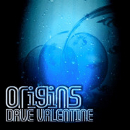
|
|
Prince of Persia The Official Trilogy Soundtrack :: Review by Steven Kennedy
 |
Album Title: | Prince of Persia The Official Trilogy Soundtrack |
| Record Label: | Ubisoft Music | |
| Catalog No.: | 992189-BCK | |
| Release Date: | December 1, 2005 | |
| Purchase: | Buy at eBay |
Overview
For those who enjoyed the instrumental backdrops to Ubisoft's Prince of Persia game series, this motley selection of music might be worth their time. The disc includes music from Sands of Time, Warrior Within, and The Two Thrones. The enclosed booklet does little to inform the listener about the music itself but does have a couple of brief bios of the composers and an overview of the game's plotline. Inon Zur is specifically credited for the central seven tracks from Warrior Within.
Body
Stuart Chatwood's opening music for The Sands of Time has a definite sample feel to its orchestral sound. It hints at an ancient Middle Eastern melody before heading into an insanely fast drumming idea that is looped through the music. The music tends to sound like something from a bad Sci-Fi channel movie tending toward just enough hints at the Middle East to make the music lend ambience to a sequence. Regardless, the melodic line is practically cliché in its use. The use of percussion here is what creates the interest but it would have been helped by live acoustic instruments. Here the vision is hindered by the lack of the real thing though vocal lines help create some ambience. The problem too may be in the brevity of the tracks here which are mere brushstrokes. When the metal rock appears in "Trouble in the Barracks", the context of the scenario itself is completely broken and we are drawn out of the time frame. "The Library" is a little better musically with interesting ethnic touches and odd meters that help keep the music off kilter and a bit more interesting.
Inon Zur's contribution for Warrior Within is a completely different soundworld in some respects from that Chatwood explored. Zur tends to write in far more symphonic and cinematic brushstrokes. Here the percussion ideas from Sands of Time are part of the texture but the fuller orchestral sound lends the music, and the adventure, a far more epic sweep. Zur's music incorporates some of the electric guitar ideas as well, but tends to focus on creating atmosphere through occasionally dense symphonic textures. There is some great brass writing and thematic development that appears here alongside atmospheric electronics and ethnic instruments (especially a prominent erhu) work their way naturally into the texture. The wailing vocals also appear in this score, a practical cliché in film often annoying to most film music fans, yet here they appear to lend a human element to the score. Zur wisely chooses to use fuller choral support after introducing the solo voice elements. He also tends to craft music that can build through orchestral crescendos or by gradually intense repetition in a solo line, as in "Warrior in Despair" with its brash trombone idea. Overall, the music here is far more exciting and fascinating to listen to on its own.
The final four tracks of the release feature music from individual chapters of The Two Thrones. Chatwood's music here gets a bit more chance to breathe as it works its way through Middle Eastern musical lines. The more electronic nature of the music with its various samples and manipulated sounds is covered with a preference for percussive loops and odd sounds. The string lines feel a bit more symphonically conceived but consist of short cells repeated against shifting textures. The tracks tend to have a similar shape of diffuse opening textures with central percussive ideas and an increase of tension through volume and non-pitched sounds.
Summary
Overall an interesting package of music that puts two approaches to scoring alongside each other. It is hard to imagine though that fans of more symphonic video game music, or those who enjoy the more contemporary electronic-styled music will be completely satisfied by what they get here.

